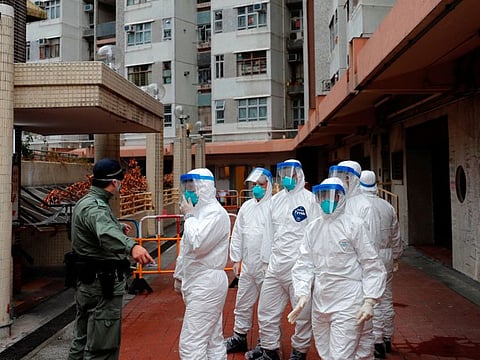Keeping a close eye on coronavirus
This outbreak is persistent and pernicious — and prudent measures must be followed

The death toll in China from the novel coronavirus has now exceeded 1,000, confirming its dubious epidemiological reputation as being more deadly than the 2003 outbreak of Sars. Four weeks into the outbreak, following containment and isolation efforts, the number of new infections in China is down almost 20 per cent from the day before.
Within China itself, questions are being asked of who knew what and when about the nature of this illness, how it spread, and how public health officials failed initially to realise the potential seriousness of coronavirus. Those are certainly valid questions — more to the point, however, is making sure now that every effort is made to prevent this coronavirus from spreading.
Certainly, with the vast majority of cases being confirmed within China, the primary fight to find an effective pharmaceutical countermeasure will be focused there. But the incidences of confirmed cases are spreading too elsewhere.
Also Read: Coronavirus in UAE: First recovery reported
Also Read: Coronavirus treatment, prevention and cure
As things stand right now, public health officials in developed nations have the measures and discipline in place to enforce quarantine measures and to ensure that those suspected of being infected are kept isolated and are receiving the intensive treatment required to fight coronavirus. The danger, of course, is that large numbers of a population might become infected, making it logistically difficult for public health officials and epidemiological specialists to contain its spread on an extensive basis.
What we know is this virus is persistent and clings to hard surfaces, meaning deep cleaning needs to be carried out in places where victims may have been in contact. That’s a difficult task, with every danger that surfaces can and will be missed.
Beyond China borders, the numbers of those suspected of having coronavirus are still manageable and, more importantly, traceable. That means the task of figuring out who travelled where and was in contact with whom can still be traced — and can warn those potentially at risk. If the outbreak becomes widespread, that becomes impossible — and more general measures will need to be taken.
Certainly, the wearing of face masks helps in preventing its spread. And as with all bugs of this nature, washing hands and covering noses and mouths when sneezing is good common practice.
The watchword here is caution. We need to ensure every measure is being taken to identify those at risk.
Sign up for the Daily Briefing
Get the latest news and updates straight to your inbox



